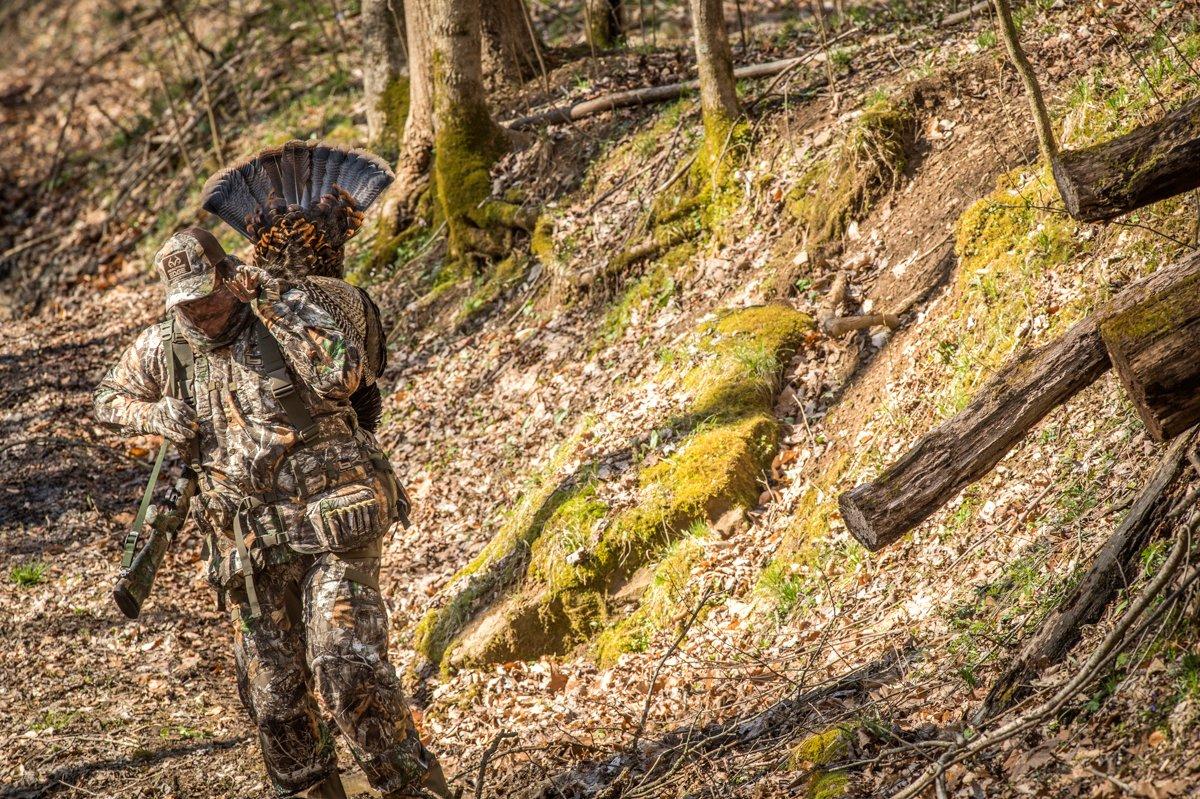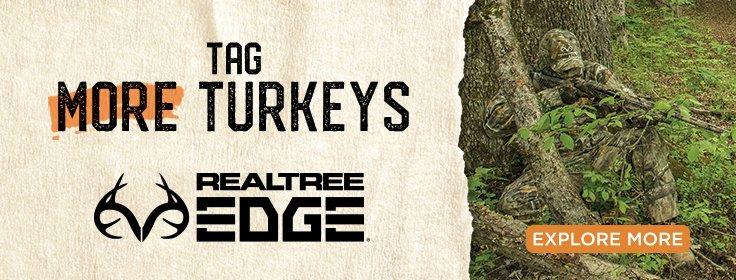Changing your calling setup can be the key to fooling a hung-up longbeard
You slip within 120 yards of a roosted turkey, set up and float some sexy tree calls. The turkey gobbles like a banshee, flies down from his limb, explodes into strut, bellows at your calls for 30 minutes but refuses to budge your way. Chances are the bird has hens, or maybe there's an obstacle in front of you he doesn't want to cross. Whatever, the turkey is hung-up big time. You might have to move your calling setup once or twice to fool him.
Make Sure All's Clear
When a hung-up turkey is gobbling 100 yards or farther and hidden in the brush, simply draw a line to his location and go for it. But many times, a strutter will gobble out after a while and go quiet. Chances are he's still strutting out there in the foliage, but where? Sit tight until you hear one more gobble. Listen for spitting and drumming, which you can hear up to 80 yards away during a calm day. By zeroing in on an all's-clear gobble or drumming, you locate the bird and can get up and move confidently. You needn't worry about spooking a gobbler that might have broken strut and slipped silently your way.
The Right Moves
Almost always, you'll use green foliage or breaks in the terrain to move on hung-up gobblers you cannot see. Still, be careful, and use your head. Curl around your first set-up tree, and crawl or sneak 30 to 50 yards back. Then stand, look over the terrain, and start circling left or right. Search for a level, open spot where the gobbler might break strut and come to your second set of calls. You might find a good setup only 30 yards from your original position, or you might have to circle 200 yards and approach a bird from another angle.
I generally yelp or cutt on a diaphragm or box call as I move my calling setup. I want the gobbler to roar so I can keep a good line on his location. But even if the turkey doesn't gobble, that's all right. I know he hears my float calls, and he might even think the hen is coming to him in a roundabout way.
Final Approach
When you believe you're getting close to a good spot for a secondary setup, blow a crow call. There's a decent chance the turkey will shock-gobble, but if he doesn't, hit him with a sharp yelp. Make him gobble so you can nail down his strut zone and slip as close as you dare — to within 100 yards, if possible. Crouch and sneak on your final approach, and set up quickly against a tree.
Get situated, level your gun over your knee and give the ornery turkey some excited yelps and clucks. If all goes according to plan, he'll almost blow the camo cap off your head with a booming gobble and come running to your new setup.
(Don't Miss: Why Modern Hunters Still Miss Turkeys)












